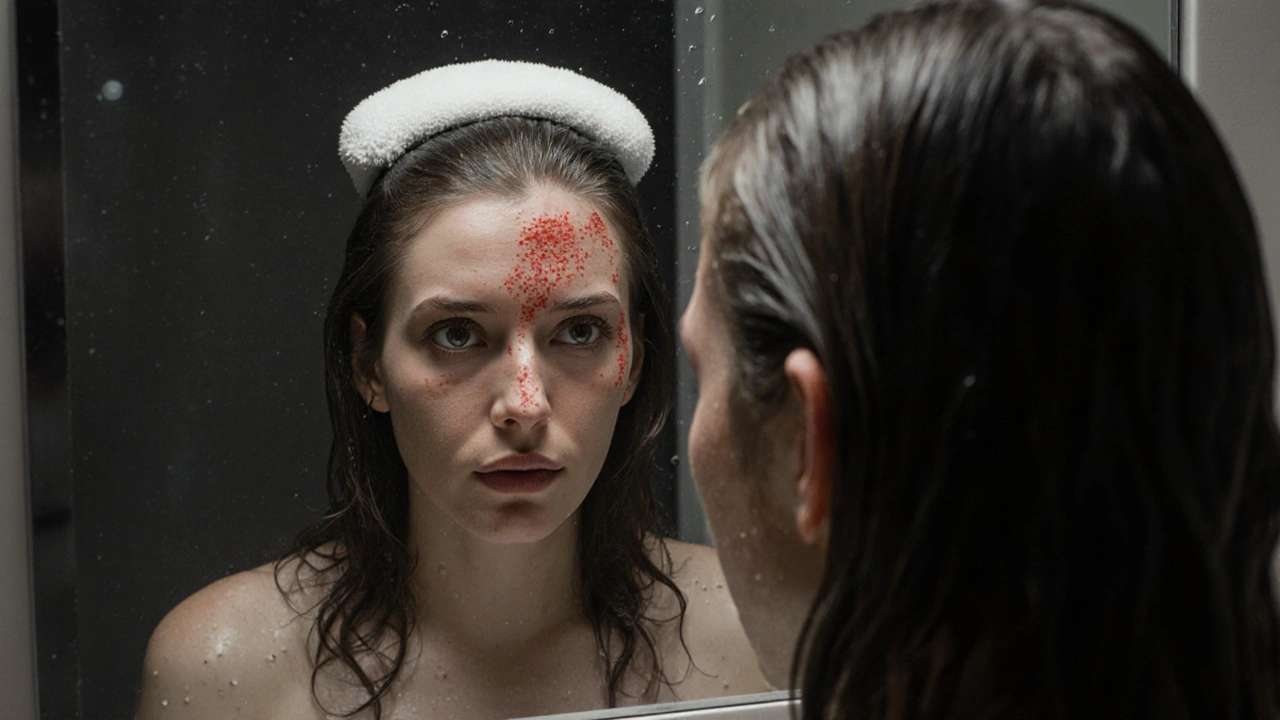When you use hair dye, a chemical product applied to change hair color, often containing ammonia, peroxide, or paraphenylenediamine (PPD). Also known as hair color, it can alter your look in minutes—but it doesn’t come without risks. Not everyone thinks about what happens after the color rinses out. The truth? Your scalp and hair pay a price, even if you don’t see it right away.
One of the most common hair dye side effects, unwanted reactions caused by chemicals in hair coloring products is scalp irritation. It’s not just about a little redness. Many people get itchy, flaky, or burning skin after coloring—especially if they’ve never dyed their hair before. A 2023 study in the Journal of the American Academy of Dermatology found that nearly 1 in 5 first-time users reported noticeable irritation. And if you’ve had a reaction to black henna tattoos or dark hair dyes before? You’re at higher risk. PPD, a common ingredient in permanent dyes, is the main culprit. It’s not just about discomfort—it can lead to long-term sensitivity, meaning future touch-ups could cause worse reactions.
Then there’s the damage to your hair itself. Bleaching dark hair to blonde? That’s a major stress test. Your hair’s cuticle gets stripped open, moisture escapes, and strands become brittle. You might notice more breakage, split ends, or hair that feels straw-like. It’s not just the dye—it’s the bleach, the heat, the frequent touch-ups. And if you’re using box dye at home? You’re more likely to over-process your hair because you can’t see the subtle signs of damage like a pro can. Hair extensions, like Halo hair extensions, a semi-permanent hair addition system that clips around the head, are often used to cover up damaged hair, but they won’t fix the root problem. If your natural hair is weakened, even the best extensions will look thin or fall out faster.
Some side effects are invisible until it’s too late. Hair thinning over time? It’s not always aging. Repeated chemical processing can damage follicles, slowing growth or causing shedding. And while most people think dye fades naturally, it doesn’t just disappear—it leaves behind dry, porous hair that’s harder to style, more prone to breakage, and tougher to color again. That’s why transitions from dark to light often take months, and why professionals recommend blending instead of full removal.
You don’t have to avoid hair dye entirely. But knowing what to watch for—itchiness, odor sensitivity, sudden breakage, or patchy color—can save you from costly repairs. If your scalp feels tight after a rinse, if your hair snaps when you tug it gently, or if you’ve had a reaction before, it’s time to rethink your approach. There are gentler options: plant-based dyes, low-ammonia formulas, or even temporary color that washes out. And if you’re unsure? A professional at a place like Halo Hair North Carolina can test your skin, choose safer products, and apply the color in a way that minimizes harm.
Below, you’ll find real stories and science-backed tips on what happens when you color your hair—how to spot damage early, how to recover, and what alternatives actually work. No fluff. Just what you need to know before the next bottle hits your bathroom counter.

Your hair didn't turn grey from brown box dye-it's likely an allergic reaction causing swelling and inflammation that makes the color look off. Learn the real cause and what to do next.